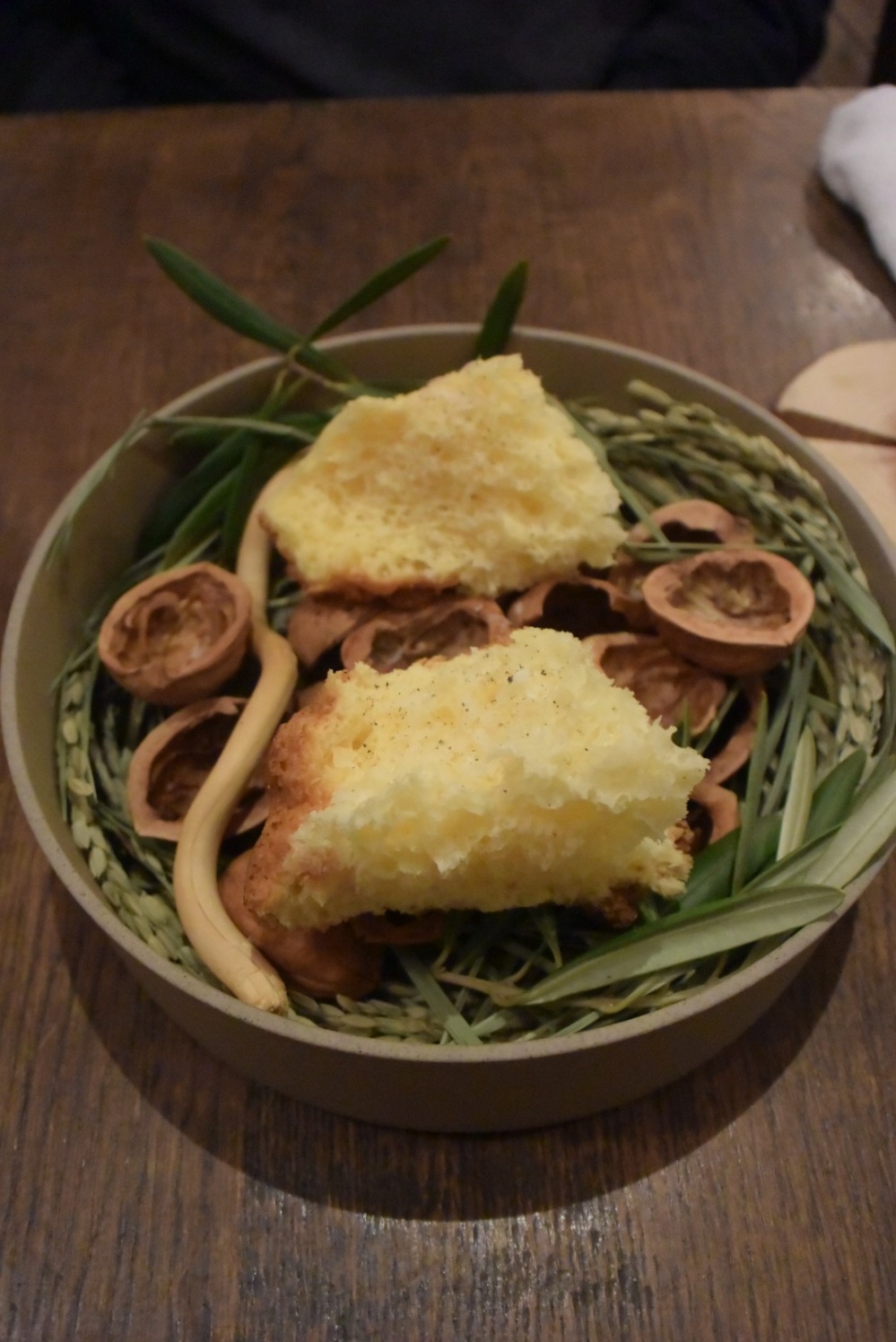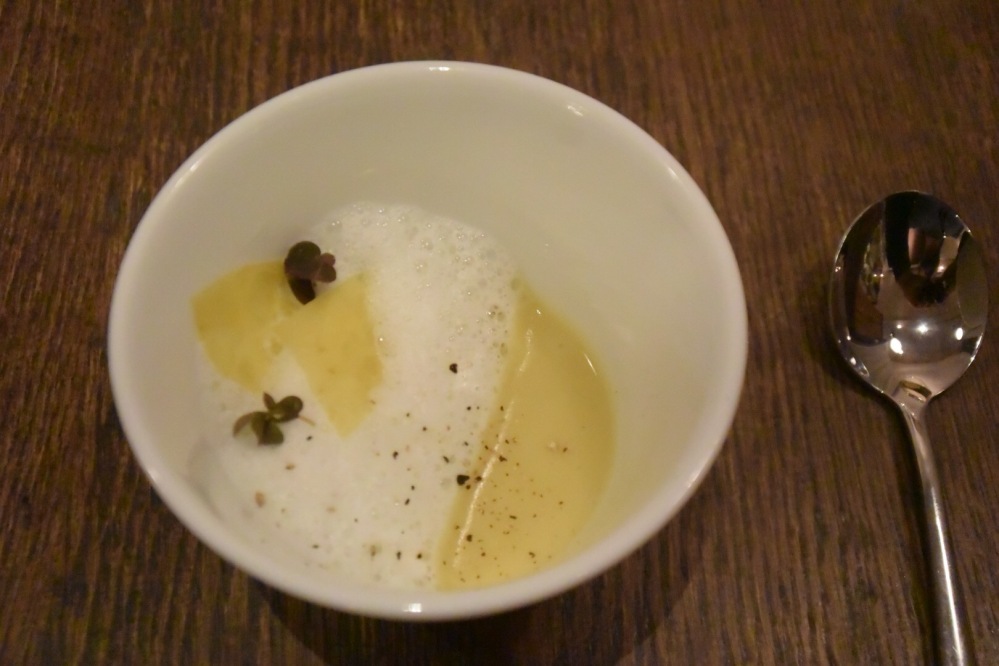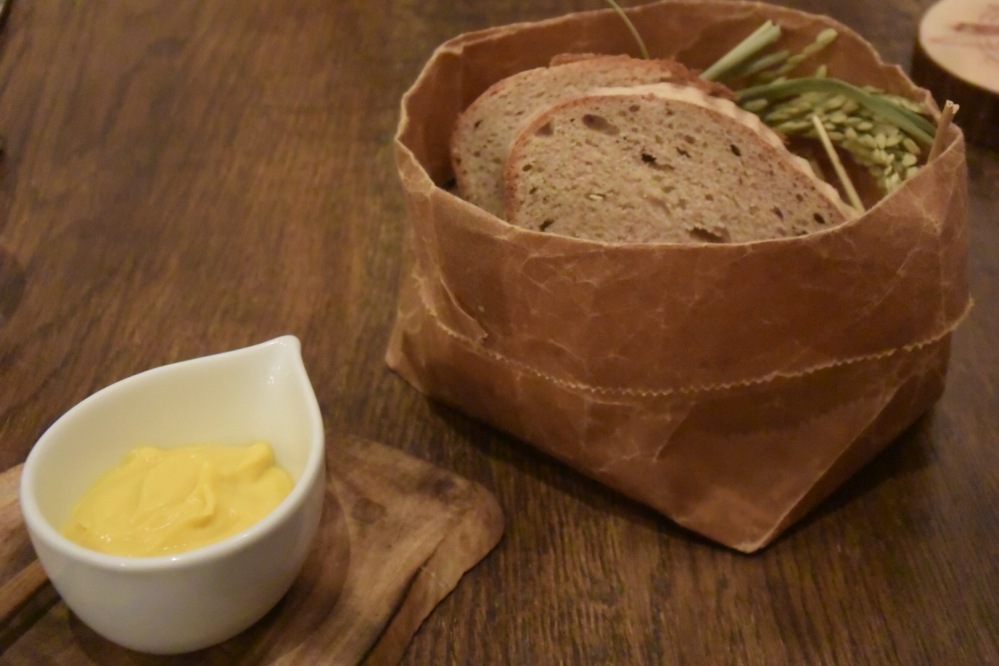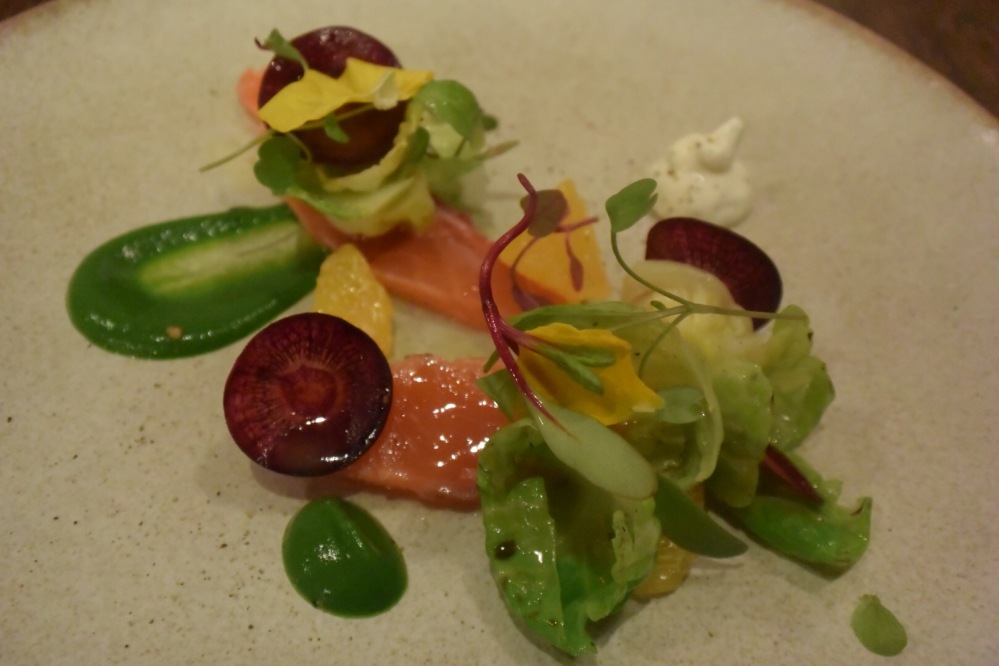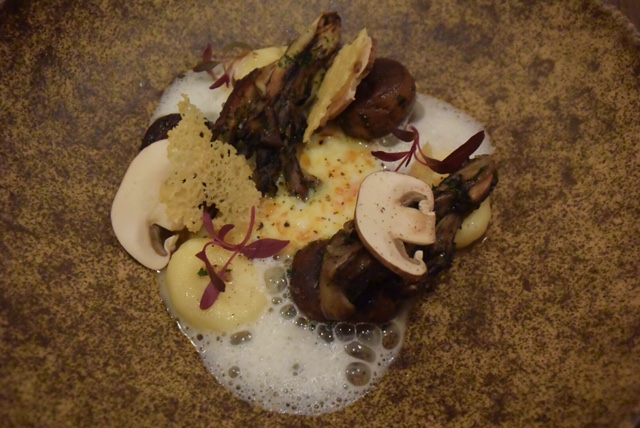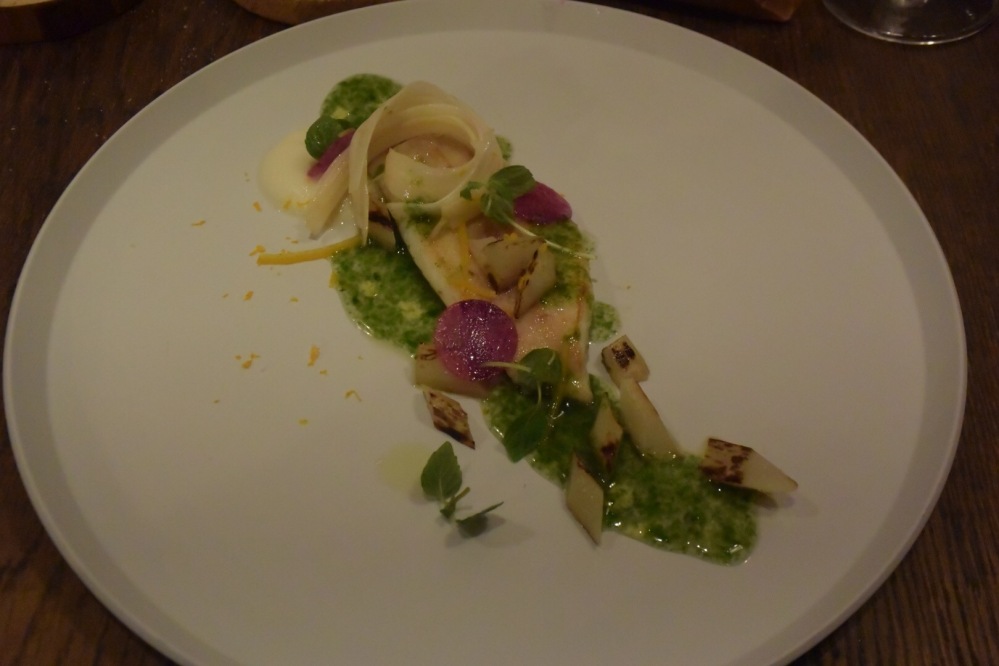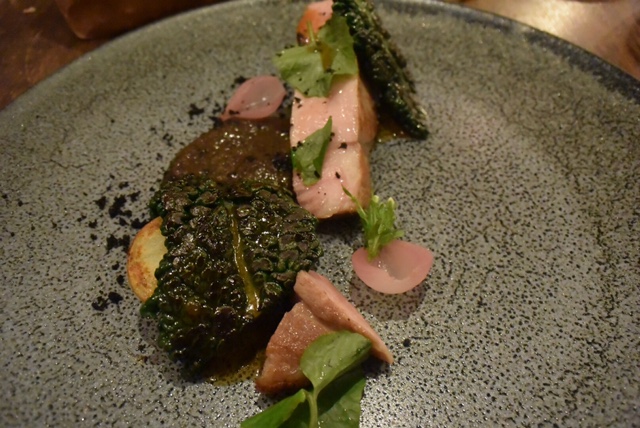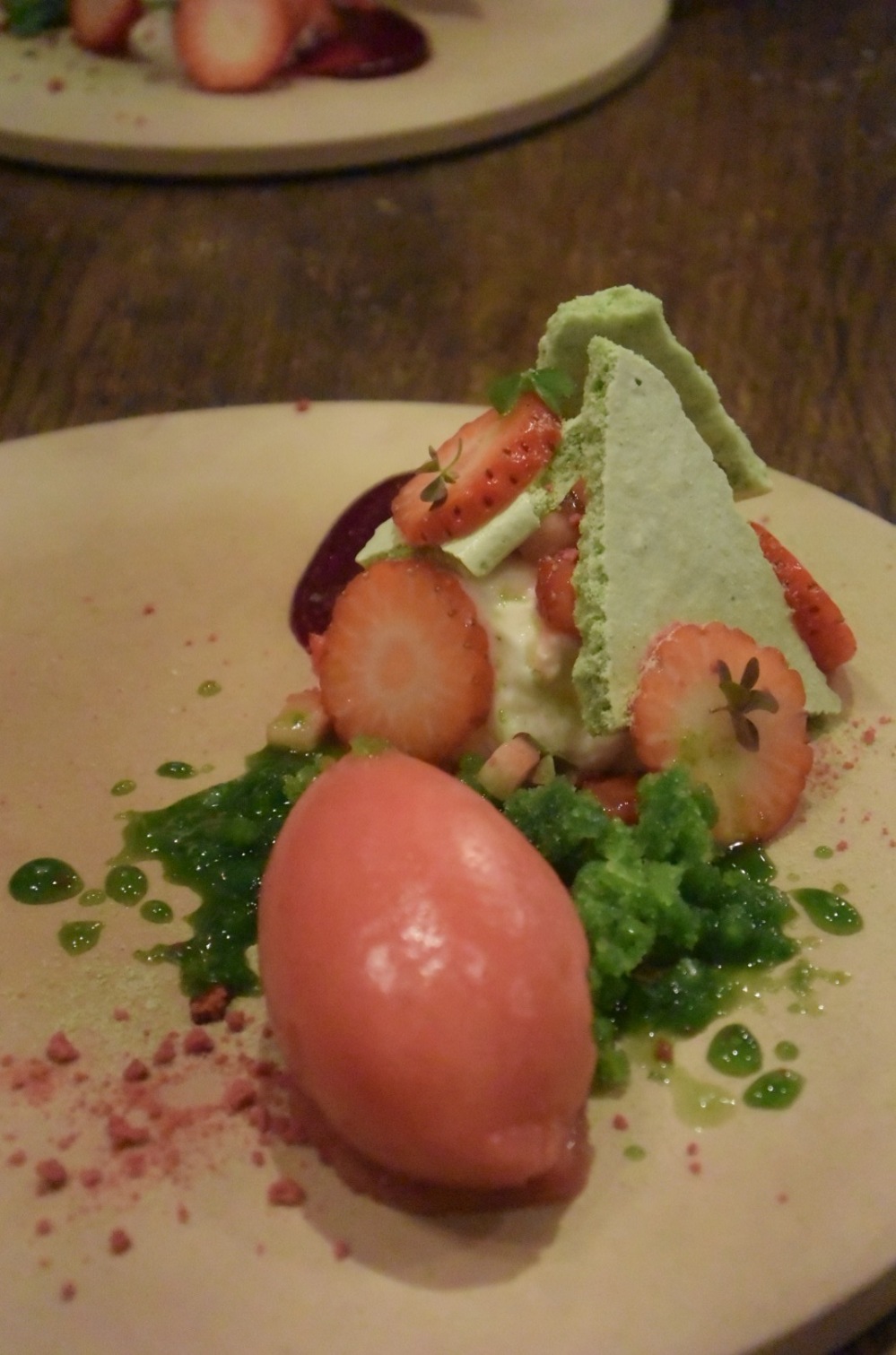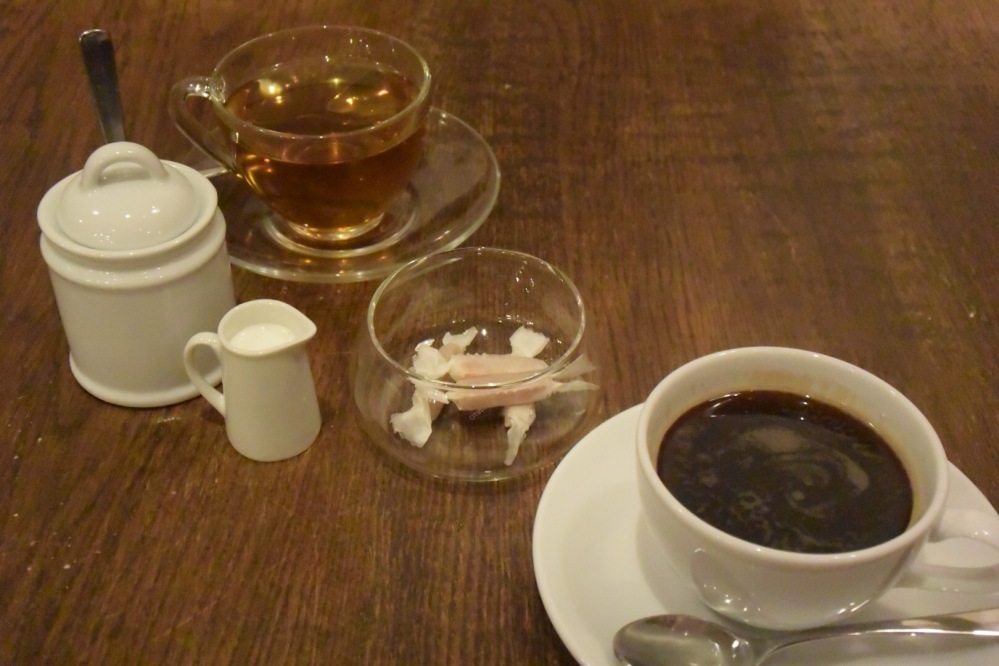Narisawa needs no introduction. It has two Michelin stars and has been named Asia’s 2nd best restaurant two years in a row. It’s been blogged about hundreds of times, but now it’s my turn.
This was our third time visiting Narisawa, a wonderful restaurant in the heart of Aoyama, one of Tokyo’s ritziest areas, just past the Bentley dealer and just before Tokyo’s only Tesla dealership. The third time is a charm, as this was the most impressive lineup of dishes yet.
It’s become apparent that since our last visit one year ago, Narisawa has focused his efforts on looking inward at Japan’s naturally growing ingredients and seafood to create a course that is not only delicious and masterfully presented, but sustainable and healthy. Two walls have been refurbished to display an impressive collection of Japanese sake, they have added a Japanese tea pairing option, and (for better or worse) have removed from the course almost all imported, non-Japanese items like the line of macarons featuring different grades of chocolate (chocolate isn’t produced in Japan, so it is no longer served).
Don’t call this “French/Japanese fusion,” or “innovative French cuisine.” Narisawa is going for something completely unique, completely new, and completely delicious through and through. There are few, if any, misses during the almost 3 hour meal, and it seems that as times goes by, this restaurant only gets better and better as they perfect their craft in terms of both cuisine and service.
But it doesn’t come cheap. Last year, they increased the price of both lunch and dinner, so be ready to spend at least 50,000 yen for two people before drinks. The one salvation is that the amount of dishes and portion sizes are exactly the same at lunch and dinner, so you can find a better value here during the day time. Either way, a visit to Narisawa is always worth it.
Let’s eat Narisawa!
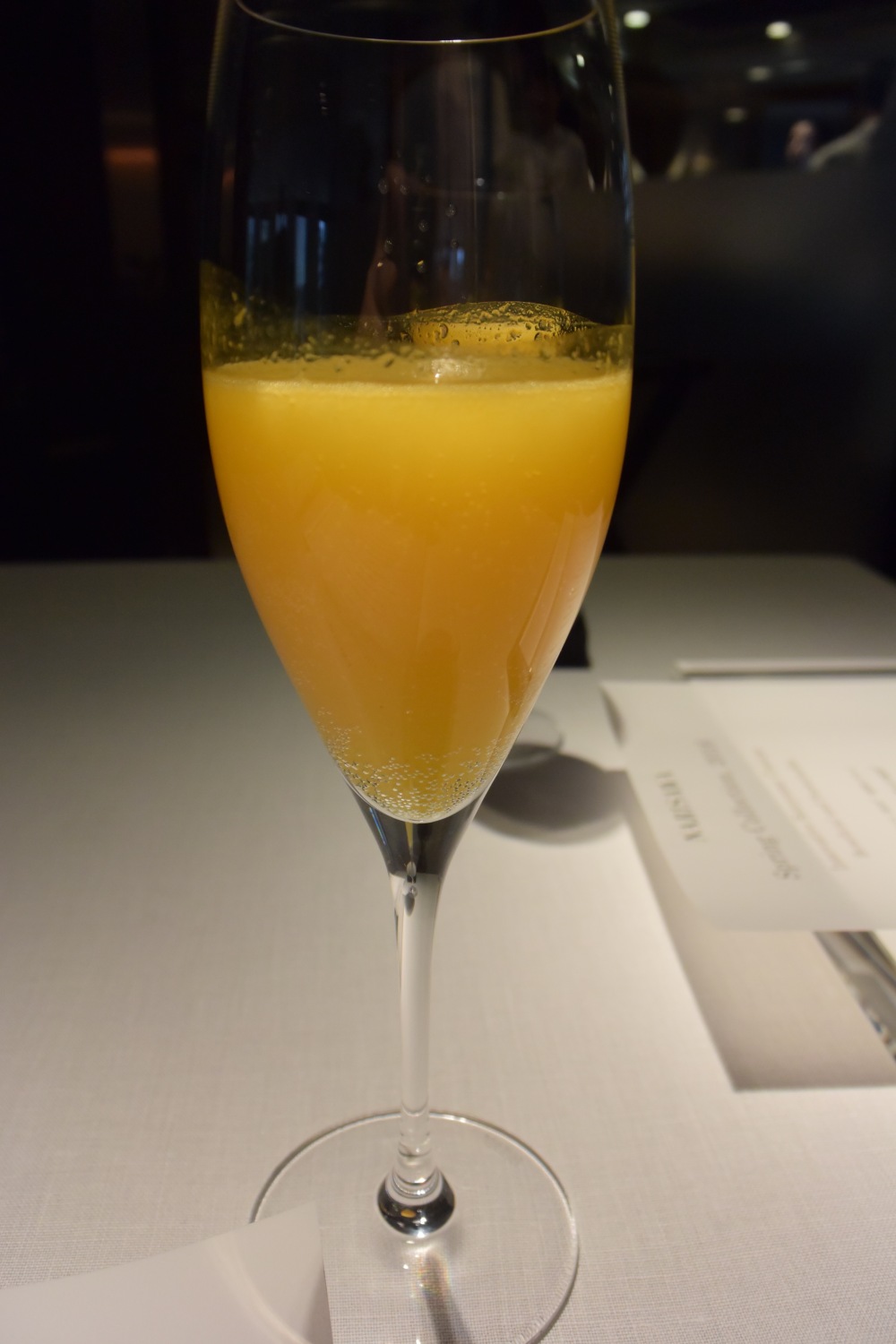
We started with a citrus champagne cocktail. Basically a mimosa.
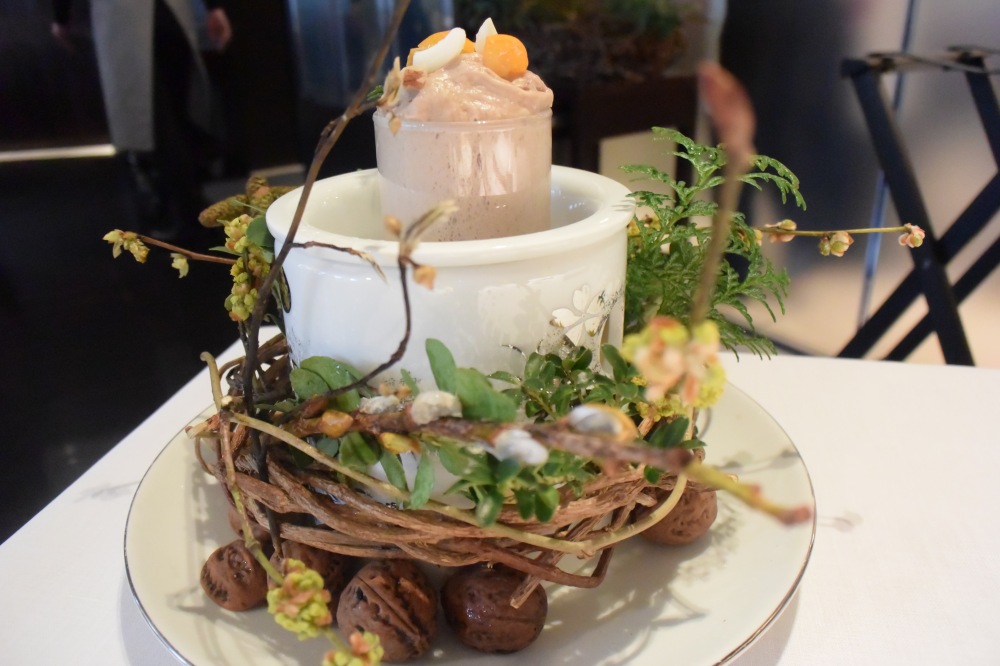
The spring menu had just started, and today’s bread included kinkan (Japanese kumquat), walnet, and yurine (lily bulb root). This is the fermented dough that later proofs in a hot stone bowl at your table.
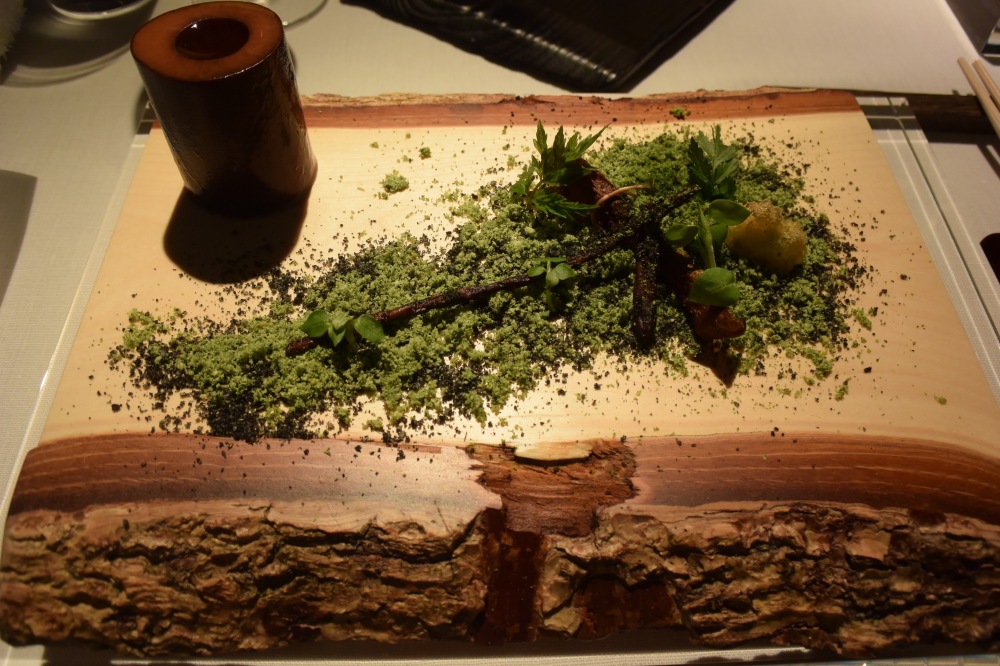
“Essence of the Forest and Satoyama Scenery” – One of Narisawa’s specialities that is always served. Start with the cedar-infused water on the left. The “scenery” is fried gobo (burdock root), crushed soybean powder, and a fermented soybean yogurt underneath.
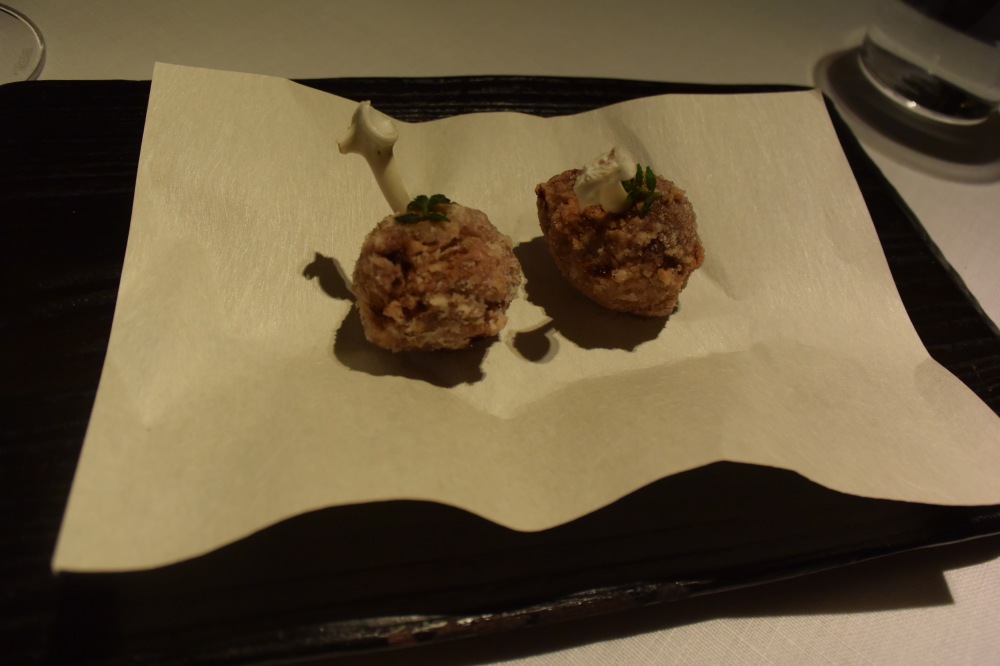
Supon Karaage from Saga Prefecture. Fried balls of soft shell turtle. Grab the bone with your hands and enjoy. This was the best preparation of turtle I’ve ever had (though I’ve only had turtle a couple of times…).

This final starter appears to be coal, but is actually a slice of onion inside a carbonized leak.
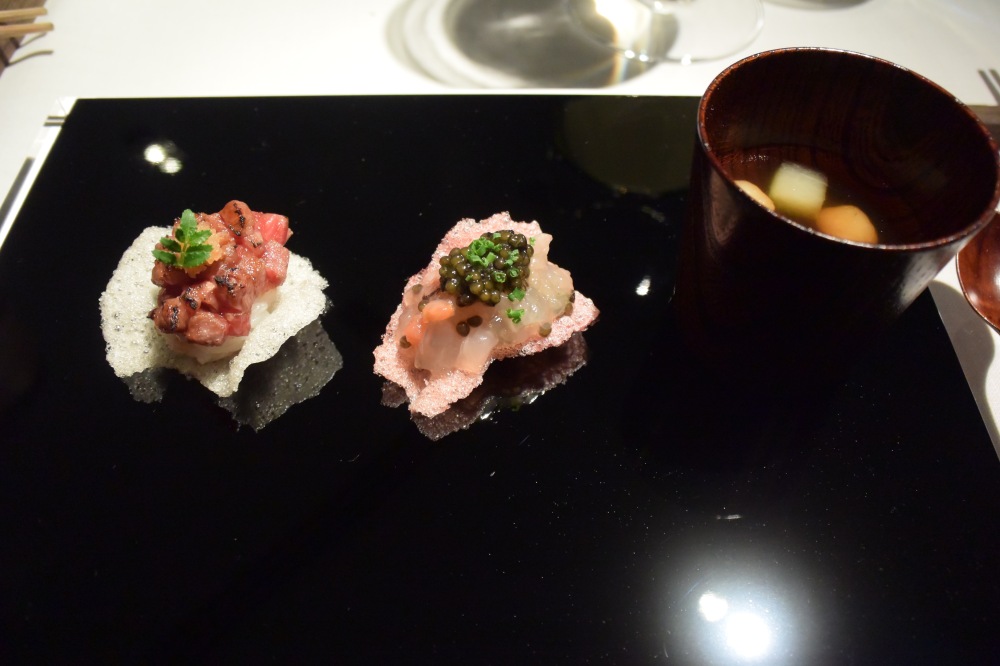
An amazing new dish here, omi beef tartar “sushi,” lobster ceviche with caviar, and Okinawa sea snake dashi soup with winter melon and potato. The two crackers were made out of kuzu (a traditional Japanese root starch), giving a soft, natural texture to support the raw meat and lobster.

I was really excited about this. Not written on the menu, this is Narisawa’s famous (notorious?) soil soup. There are only two ingredients- soil from Nagano and gobo (burdock root, a very common item in Japanese cooking). There is no salt or seasoning otherwise, and it was absolutely delicious. Somehow sweet and savory, smooth, and delicious with an earthy aftertaste. I actually requested this dish last time to no avail. I requested again and it was served just for us! Thanks, Narisawa!

The finished bread served with Narisawa’s moss butter. The moss is made of olive and spinach crumble. Especially delicious after it gets soft and spreadable.
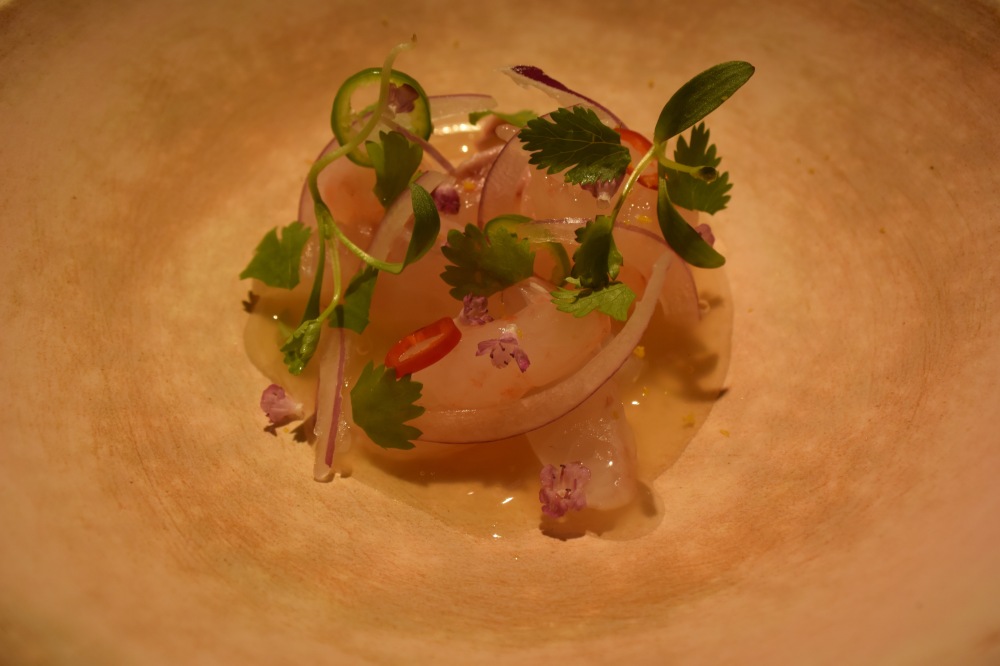
Akashi sea bream and botan ebi shrimp. Served ceviche style with various herbal garnishes and a yuzu kosho sauce. The shrimp was especially delicious, cooked in the kobujime style, where the shrimp is wrapped in kombu for several hours to allow the natural umami to penetrate and tenderize the raw shrimp. Amazing.
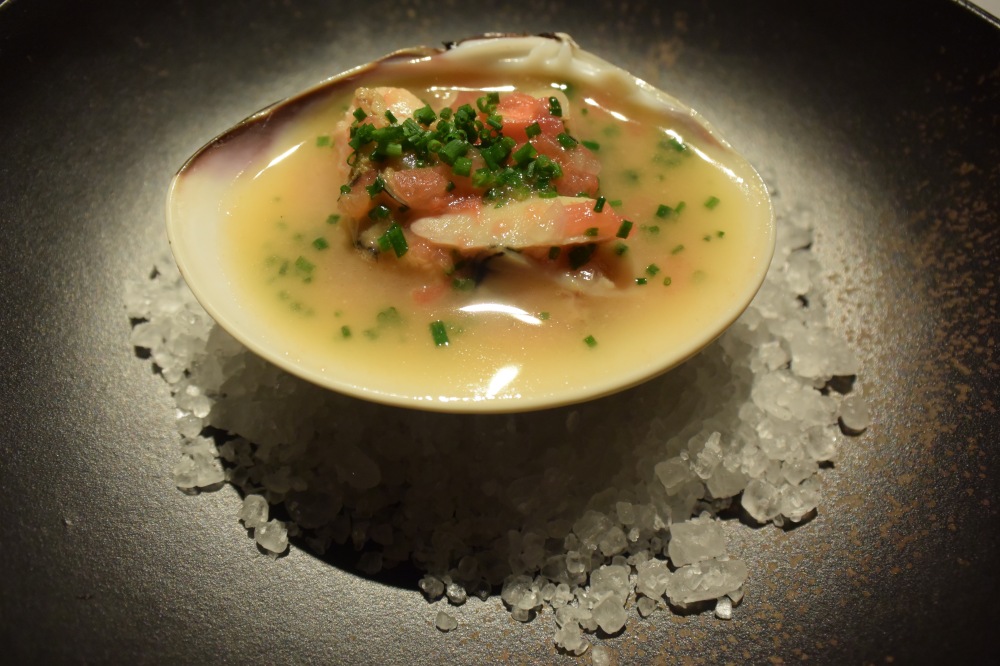
Hamaguri clam from Mie Prefecture. Served in the hamaguri essence with tomato and menegi green onions. Another fantastic dish.
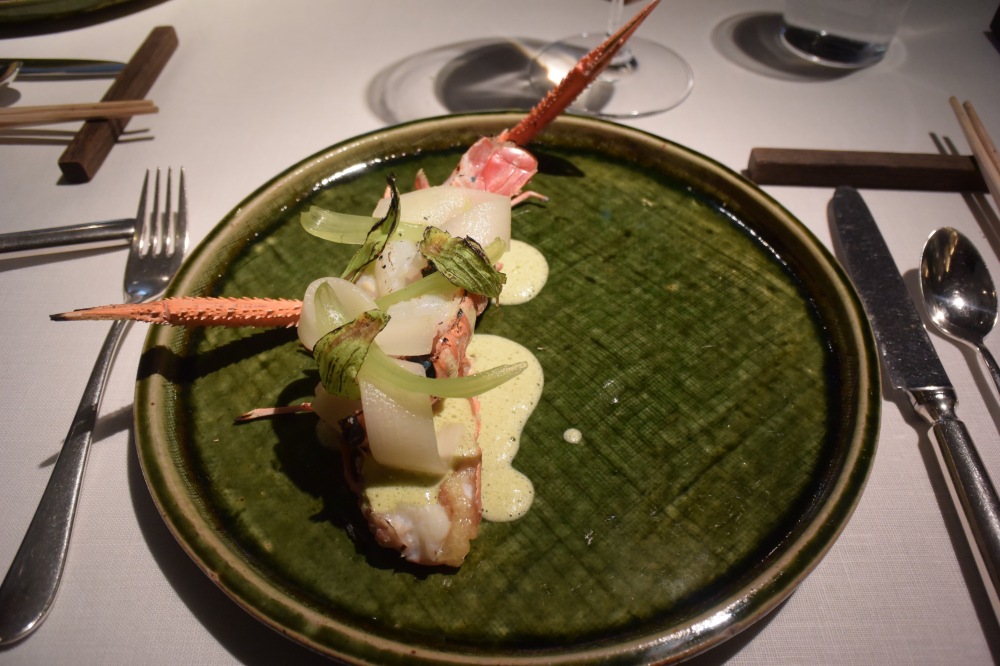
Langoustine shrimp with udo and fuki no to, bringing together the sea with naturally growing mountain vegetables in a scallop and fuki no to sauce. Plenty of shrimp eggs and brains were included in this beautiful dish.

Tilefish (amadai) coated with a crispy, crumbled, colorful rice cracker mixture with horsehair crab (kegani) with a red daikon radish for garnish. The broth had a strong, savory mitsuba (Japanese parsley) flavor.
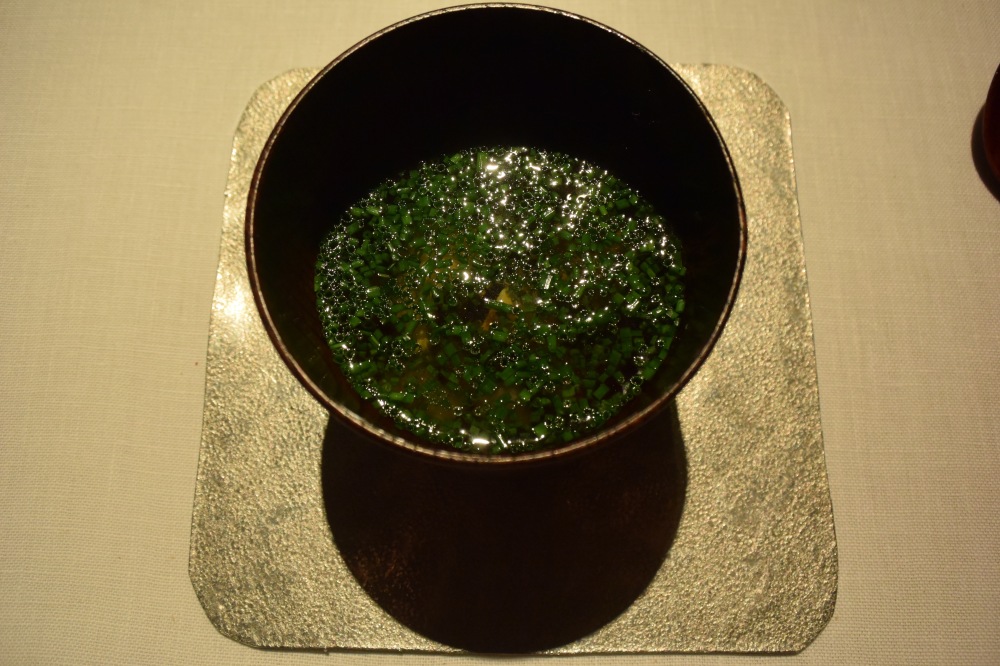
“Luxury essence 2007” – a broth made from boiling a mixture of several meats for many hours. It didn’t come through in the photo, but the soup is filled with abalone (awabi) and spring vegetables. A hearty soup indeed!
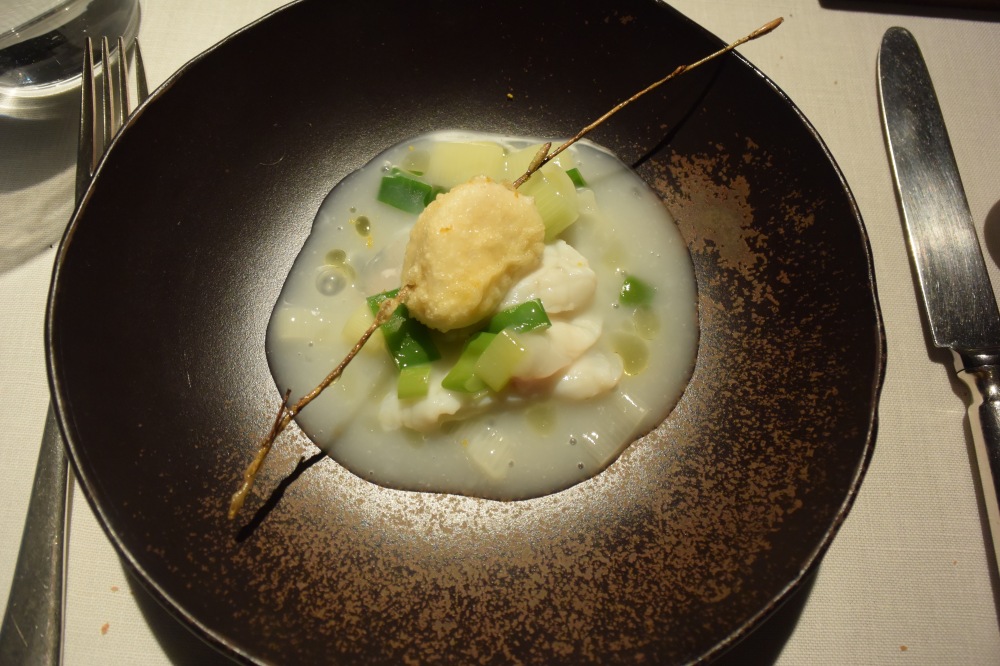
Artfully prepared fugu and a tempura of shirako (fish semen!!). The fugu was served in a shabu shabu style.
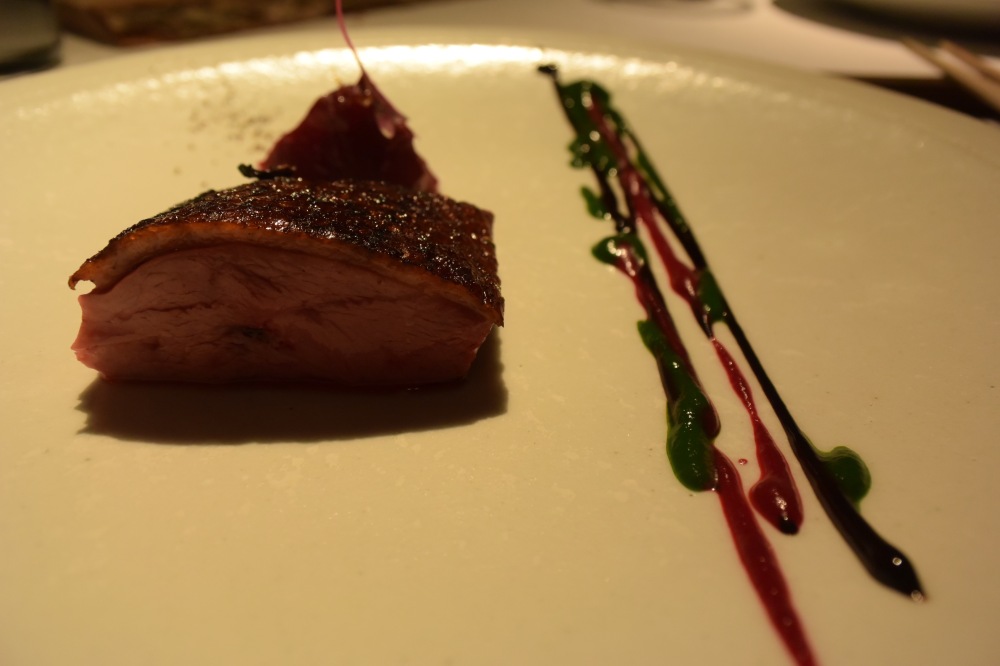
The final savory dish was duck (aikamo) that was prepared in the Peking Duck style. Crispy, crackling skin with juicy, medium rare meat. Served with beets and a fairly avant-garde sauce presentation consisting of black, fermented garlick, beets, and shungiku (Japanese chrysanthemum).
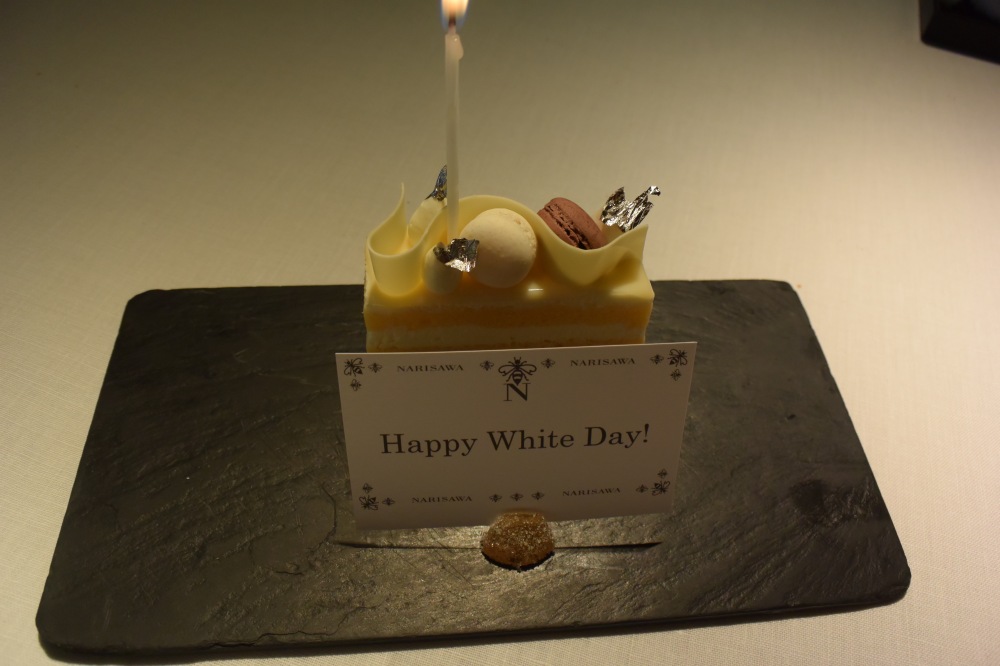
Our first dessert was a pleasant surprise not featured on the menu. A tasty white chocolate and vanilla cake to celebrate White Day, a greeting card holiday when the men reciprocate for gifts they received from the women on Valentine’s Day.
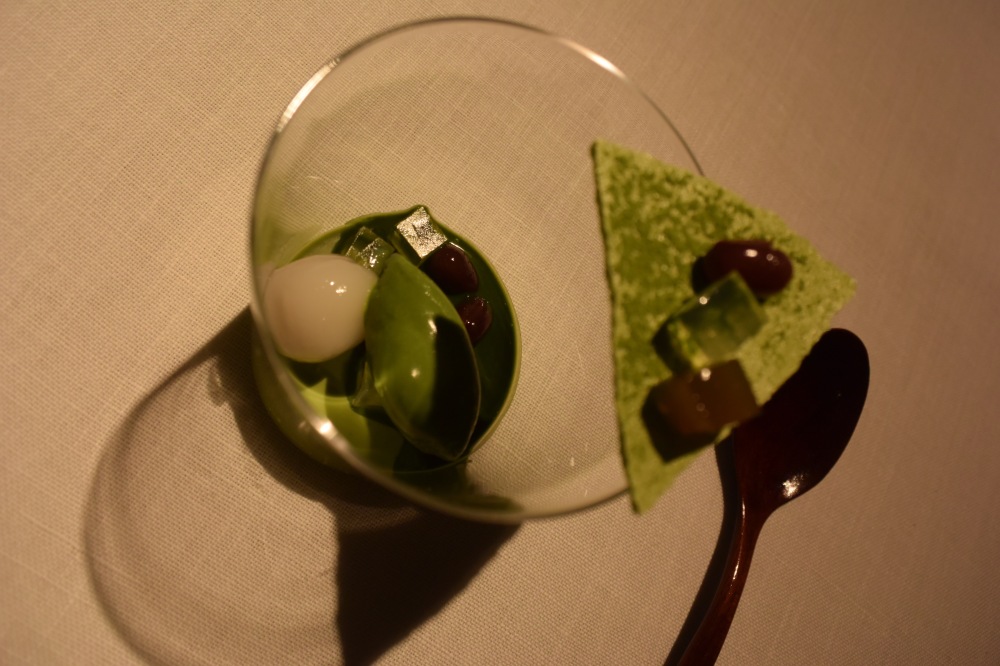
“Matcha” A very Japanese dessert consisting of green tea gelato, shirotama mochi, azuki beans, and kanten (Japanese agar). The garnish on top of the glass is a green tea meringue.
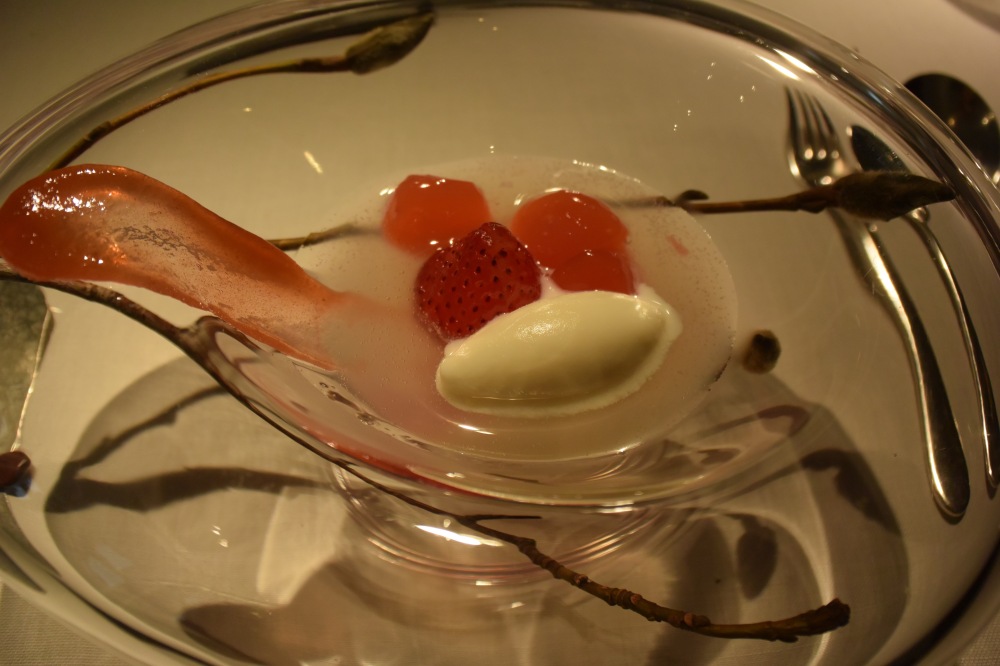
Magnolia gelato with strawberries, strawberry jam, and strawberry mochi topped with a hot magnolia broth for a hot-cold contrast. My favorite part of this was the jam on the left that was so deeply infused with strawberry flavor and unlike any jam I’ve ever had.
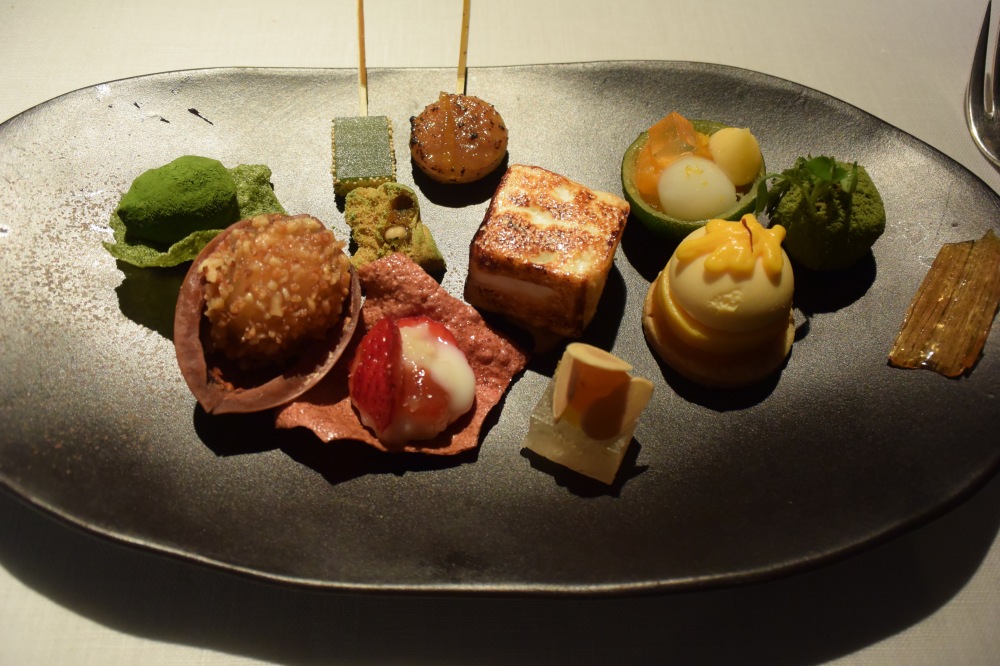
And finally, the mignardise. These are wheeled out on a beautifully arranged cart, and you can choose whatever you want. I asked for one of each and loved it all.
